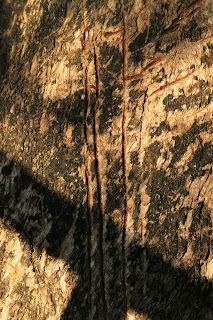Jaguar scratch marks
The first sightings were the conspicuous capybara, that were common along all the waterways and rice field ditches.
Capybara
The property has a good amount of dry savannah and termite mound filled ranch land that supports a healthy population of giant anteaters. The entrance track from the road to the lodge passes through an area of suitable habitat that appears to be a very reliable location to see this unique creature. I had 12 sightings of them almost all along this entrance track including 7 in one night. I even witnessed a female having to fight off an eager male who was trying to mate with her.
Giant anteaters
The wet grasslands and forest edges were reliable places to see the endangered marsh deer which appears to be common on this property. I saw several on most outings, but they were more common at night.
Marsh deer
Yellow armadillo
The night drives were fantastic and I had some close views of 5 different crab-eating foxes, including a pair that were hunting in an area of long grass close to the road.
Crab-eating fox
The night drive target was ocelot and over the course of the 3 nights I saw 5 different cats including a stand off between a large male and 2 crab-eating foxes, at first the ocelot chased the foxes then the tables turned and the ocelot retreated without any physical contact. I also saw a saw cat run across the road that frustratingly I could not fully identify or re-find.
Ocelots
Ocelot
The fur around his head was turning grey because of his age, but it may have been exaggerated by the wounds on his face.
The reason for the high success rates in seeing ocelots and other carnivores at this site is most likely because of the high density of rodents using the drainage ditches adjacent to the rice fields and pastureland that has attracted the normally forest dwelling carnivores out to hunt these productive areas. The population of ocelot is particularly high on this property compared to others in the pantanal, where they have much larger territories.
Along the rivers there was well preserved gallery forest and here I found black howler and black-striped tufted capuchin troops.
Black-striped tufted capuchin
Black howler (female)
I also had 2 sightings of a group of the fantastic giant otters, which inhabit the larger waterways on the property, the sounds these enormous mustelids make has to be heard to be believed.
Giant otter
While on a boat ride along the smaller river mid-morning on one of the days I spotted this female jaguar sat on the riverbank for about 3 minutes before it slunk away into the forest. There are thought to be 8 jaguars resident on the Fazenda and their habit for using the larger waterways for hunting and resting means that there is always a chance of a sighting in these habitats.
Jaguar
The numbers of yacare caiman appeared to be much lower than in the northern pantanal, but the views I had were as close as ever.
Yacare caiman
I also had several sightings of the black and white Argentine tegu, which was only recently split from the golden tegu found further north. This species is the largest of its family and they fill a similar ecological niche to that of the monitor lizards of Africa, Asia and Australia.
Argentine black-and-white tegu
I again found several amphibians at night that require detailed study before identification can be made.
unidentified.



















































